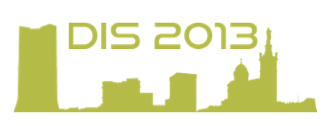Speaker
Eric Voutier
(LPSC/IN2P3/CNRS - UJF - INP)
Description
The partonic structure of hadrons as encoded via the so-called generalized parton distributions (GPD) can be accessed via deeply virtual Compton scattering (DVCS) experiments. Similarly to the scattering of light by a material, DVCS provides information about the dynamics and the spatial structure of hadrons. DVCS off nuclear targets allow to address the partonic structure of the nucleus (coherennt channel) as well as the partonic structure of nucleons (incoherent channel) embedded in the nuclear medium. Identification of these reaction channels is however challenging, requiring a clear separation of the coherent and incoherent channels.
The high density of the He4 nucleus and its isoscalar nature have always been appealing features for nuclear structure studies. In the case of DVCS experiments, this translates into the ability to extract from the single measurement of the beam spin asymmetry (BSA), the real and imaginary parts of the Compton form factor that contains the He4 leading twist GPD.
The eg6 experiment at the Jefferson Laboratory explored nuclear DVCS off He4. The BSA was measured with the CLAS detector, complemented with a small angle electromagnetic calorimeter and a radial time projection chamber. This talk reviews the experimental methods and techniques of the eg6 run, and discusses the preliminary results of the measurements of the He4 Compton form factor.
Author
Eric Voutier
(LPSC/IN2P3/CNRS - UJF - INP)
